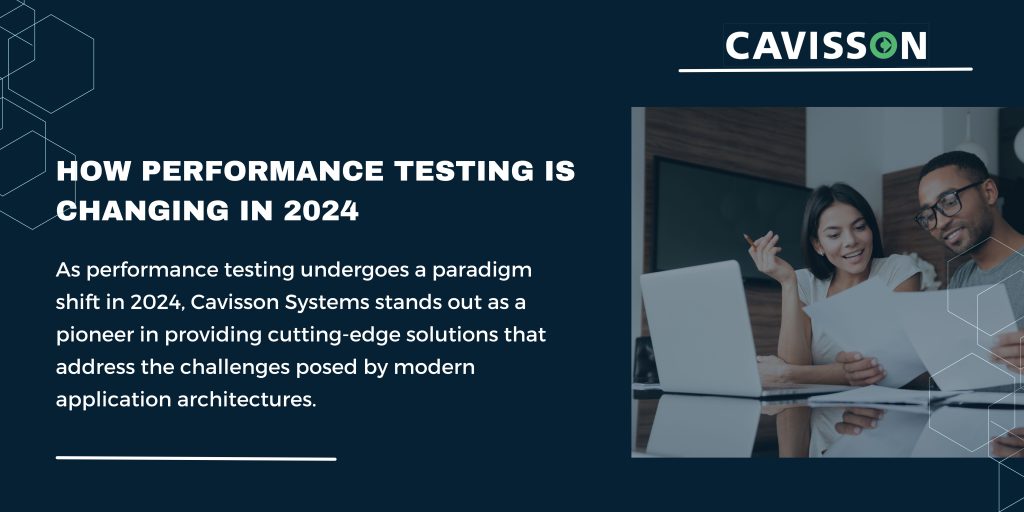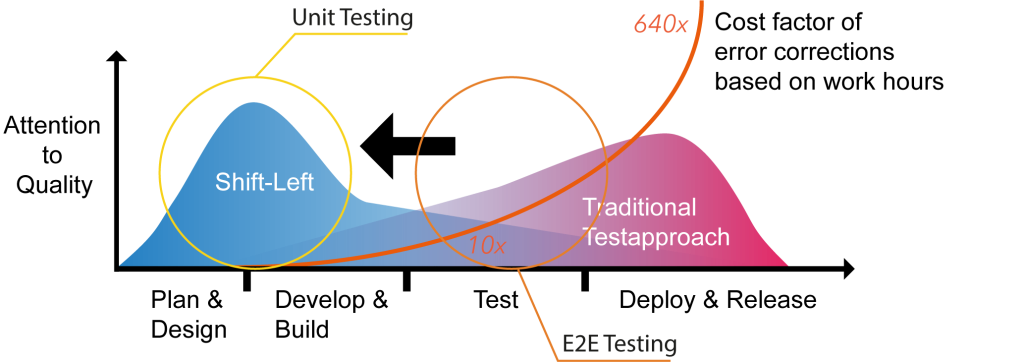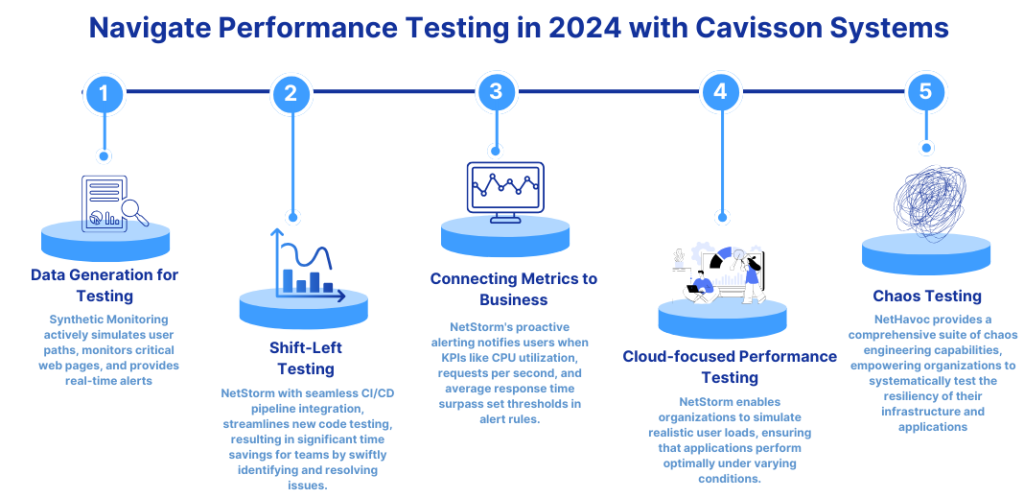
Revolutionizing Performance Testing: Embracing Change in 2024
Biggest challenges expected to be faced across the performance testing domain-
1. Data generation for testing
For tests to be accurate and reliable, test data is needed. A detailed and high-quality set of data will also produce high-quality tests. Data for testing needs to be comprehensive, cover a wide variety of scenarios, and conform to testing environment requirements.
Test data can be difficult to obtain, however. Gathering data from production and adapting it to testing requirements is required. Despite having the right types of data, it still needs to be obfuscated, randomized, and replicated for production, which is a resource-intensive process. This is vital for maintaining privacy and security. As the number and need for tests are expected to grow in 2024, finding and cleaning real data will become an increasingly significant challenge for running performance tests.
Generating high-quality test data with Cavisson’s Replay Access Log enables realistic testing scenarios using production access logs. Synthetic Monitoring actively simulates user paths, monitors critical web pages, and provides real-time alerts. It supports multi-channel testing, benchmarking, and seamless tracking of performance issues from front-end to back-end, using real browsers and distributed agents globally. Integrated with NetDiagnostics, it identifies hot spots and ensures continuous availability monitoring.
2. Shift Left Testing
The Shift-Left approach, which involves integrating testing early and often in the development process, is expected to continue gaining traction. By 2024, shift-left testing will most likely be the norm, with functional and other types of testing performed concurrently with development to detect and resolve issues sooner.
Shift-left testing reduces the likelihood of critical bugs making their way into later stages of development by catching defects and issues at their source. It saves time and resources and fosters a quality culture within development teams.This approach reduces time to market and helps to ensure higher-quality releases.
Being pioneers in performance testing, we saw the over-arching need to test your application early in the development cycle to reduce the negative impact an unforeseen issue might have in your production environment. With built-in integration with CI/CD pipelines, NetStorm gives you the option to test new code and witness massive savings in terms of the time spent by your teams in identifying and fixing issues and ensuring that your customers do not undergo a negative experience when you push new code to production environments.

3. Connecting Metrics to Business
Various metrics will be reported in a performance test report, including error rate, hits per second, and response time. Who can say whether these findings are good or poor, and what they mean for your company? As company agility and optimization become a “make or break” criterion for success in 2024, understanding findings and turning them into meaningful business insights will be critical.
How to solve the problem: Baseline Requirements
Building a performance baseline will aid in the measurement and enforcement of service level targets, ensuring optimal system performance and functioning. To establish a baseline, gather historical data, stakeholder requirements, company needs, and industry best practices, and set various performance levels. Compare your results to the baseline when doing tests. This will aid in the detection of problems so that teams may address them before they have a significant impact on users.
NetStorm includes proactive alerting functionality, which allows users to be notified when a KPI (Key Performance Indicator measure such as CPU utilization, request per second, average response time, and so on) exceeds the threshold set in the alert rules. This allows users to be notified of performance decline before it becomes a serious problem.
4. Cloud focused performance testing
Cloud-based testing environments are becoming increasingly popular due to their scalability, flexibility, and cost-effectiveness. More organisations will likely use cloud services for testing by 2024, benefiting from the ability to quickly set up, tear down, and replicate test environments without the need for significant physical infrastructure. Applications are increasingly leveraging microservices architecture and containerization, posing new performance testing challenges. Cavisson’s product suite has been designed to integrate seamlessly with these modern architectures, ensuring that performance testing accurately reflects the complexities of today’s applications.
Cavisson’s NetStorm is a comprehensive performance-testing solution that supports a wide range of applications, including those based on microservices and containerized architectures. It enables organizations to simulate realistic user loads, ensuring that applications perform optimally under varying conditions.
5. Chaos Testing
Chaos Testing, also known as Chaos Engineering, introduces failures into your infrastructure and applications on purpose. Previously known as resilience testing, chaos testing has evolved into products that enable organisations to test the resilience and stability of their solutions under unpredictable conditions.
NetHavoc provides a comprehensive suite of chaos engineering capabilities, empowering organizations to systematically test the resiliency of their infrastructure and applications. With features spanning infrastructure and application chaos testing, fault injection, automation, and detailed monitoring, NetHavoc enables users to simulate real-world failures in a controlled environment. The tool allows for the creation of specific chaos scenarios, offers robust analysis and reporting post-experiment, and integrates seamlessly with CI/CD pipelines. By facilitating proactive identification of weaknesses and vulnerabilities, NetHavoc supports the development of more resilient systems, ultimately enhancing the overall reliability and performance of IT environments.
Learn how you can quickly introduce Cavisson NetHavoc chaos testing and scenarios.

Conclusion
Testing is necessary to keep up with the rapid evolution of modern development processes. Teams may maintain code quality and agile delivery by adjusting performance testing processes, tools, and approaches. The list above breaks down Six of the biggest challenges that engineering teams, developers, and QA will face in 2024.
Cavisson Systems stands out as a pioneer in providing cutting-edge solutions that address the challenges posed by modern application architectures. With a suite of products designed for microservices, containerization, Shift Left Testing, cloud readiness, Service virtualisation and Choas Engineering, Cavisson is empowering organizations to deliver high-performance applications that meet the demands of today’s digital landscape. Embracing these innovative solutions will undoubtedly be a strategic move for organizations aiming to excel in the ever-evolving world of performance testing.
Contact us today to start your journey with Cavisson Systems.

